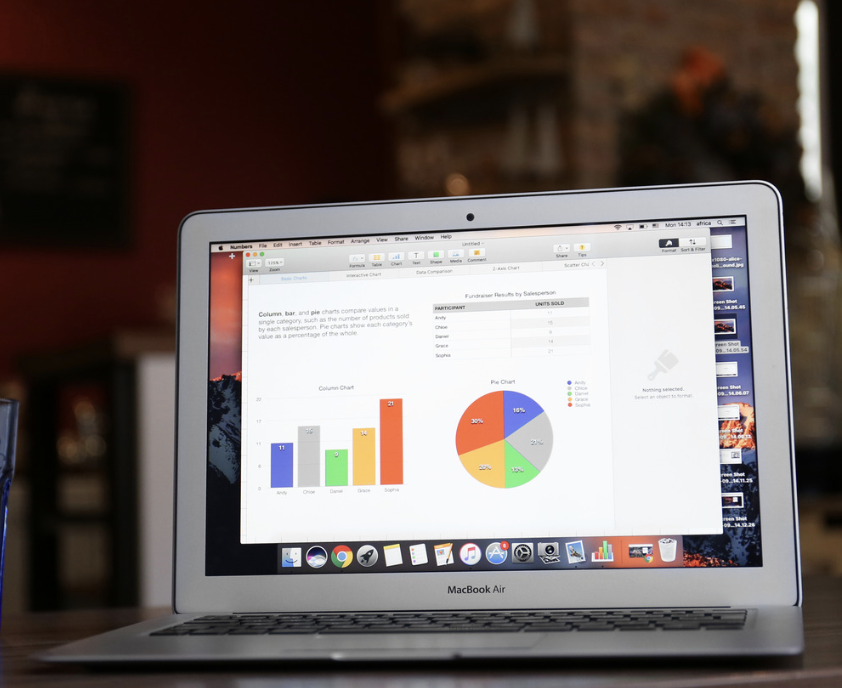A new iOS version that prioritizes artificial intelligence? Got any new Mac hardware? Would you want a “One More Thing” wildcard?
As always, the technorati are speculating about what may be disclosed at Apple’s yearly cutting-edge technology event, the Worldwide Developer Conference (WWDC), which is rapidly approaching:
As one would expect, Apple has secured the specifics of the announcements it intends to make on Monday with more secrecy than Fort Knox. However, many onlookers feel that they had better be excellent at what they do. Reason being, there have been hints that the fruit factory’s future may not be bright since the start of the year.
Early this year, Apple saw a precipitous decline in sales in China due to intense competition from local products like the Huawei Mate, which prompted the tech giant to slash prices significantly. Apple had to temporarily remove the pulse oximeter feature from its most recent Apple Watches in December 2023 after the International Trade Commission found that the company infringed on the patents of medical equipment manufacturer Masimo. The decision prompted the company to temporarily halt sales of the watches until the ruling could be appealed.
Furthermore, Apple is facing a lawsuit that goes to the heart of the company’s operations after the Justice Department sued the tech giant in March, claiming that it participates in various anticompetitive acts due to its monopoly in the US smartphone market. (The claims were refuted by Apple.)
Naturally, the device manufacturer is still a massive worldwide success according to most metrics. Following a precipitous decline earlier this year, the stock price is currently hovering around $3 trillion, reestablishing the business’s value at about the same level it was six years ago, when it became the first corporation in the world to reach that milestone.
Processing Apple’s expansion via a juicer? Naturally, we can’t forget about the iPhone, which not only accounts for an astounding 43% of worldwide smartphone revenues but also commands a 17% share of the market in terms of devices sold. Additionally, Apple’s services division, which is mostly characterized by app and content sales, is doing very well and is anticipated to contribute 25% to the company’s overall income by 2025.
Innovation and staying ahead of the curve are more important metrics for a tech company’s success than the items it has on the market right now. As a result, it will be difficult for Apple to make announcements that evoke the spirit of the company’s heyday.
Everything about Apple’s AI plans has been a focal point thus far. Rumor has it that Apple is teaming up with OpenAI, Google, and AI firm Anthropic. This would be a strange move for a lot of reasons, including the fact that Apple would rather keep its core technologies in-house and the fact that it would seem more like a play-to-win than a game-changing innovation.
For others, Apple’s new OpenELM language models—a collection of four reduced versions of the original open-source software—signal a shift in strategy toward providing powerful AI capabilities “on handset” rather than relying on remote servers in the cloud.
However, it doesn’t seem like the new skills being spoken about are very groundbreaking: Doing voice memo transcriptions? Condensing online conversations and resources? Photo editing? Personalized emoticons? When compared to Open AI’s demonstration of GPT-4o, its most recent huge language model that is supported via speech, none of them will likely make a dent.
Apple has been successful financially and commercially under Tim Cook, but the company still hasn’t regained the magic it had when Steve Jobs was CEO—the ability to control the cultural narrative, to inspire belief that Apple can change people’s minds about technology and its place in their lives.
Now that Apple’s most anticipated innovations have failed or bombed, it’s harder to make the case. The ten-year, $10 billion internal effort to develop an electric vehicle bearing the Apple name, Project Titan, was formally terminated in February. Despite early excitement over its undeniably innovative feature set and performance specifications, Apple’s mixed reality “headtop” computer, the Vision Pro, which was unveiled last year, did not immediately capture the attention of customers.
It was during the WWDC when the problems with Vision Pro first began to surface. The visually stunning demo felt disconnected from what people really desired, with visor-wearing users meditating in front of massive virtual mandalas, exploring floating windows dispersed across various rooms of their homes, and working while seated among a swarm of applications.
On the other hand, Jobs summed up the initial iPod’s promise to users in a single statement when he threw back the curtain on it in 2001: “1,000 songs, and it goes right in my pocket.” Your favorite songs, whenever you want them, right at your fingertips. Although the iPod was criticized by some for being expensive and superfluous, the key advantage it offered was appealing to real buyers, and it launched a whole new market for portable consumer electronics.
I was wondering whether Vision Pro has a counterpart to songs-in-your-pocket. Dealing with spreadsheets? It’s hard to see how that perk could convince someone to shell over $3,500 for the right to use “spatial computing.” Just like the initial iPhone, Apple Watch, and iPad all need some time and tweaks to find their groove, no one should write off Vision Pro just yet. However, Vision Pro isn’t it—at least not yet—if Apple is trying to reassert its significance in the real world.
The gadget can only be used for a few hours without being plugged in because of how much power it consumes. The battery is cumbersomely attached to the waist. Many have made fun of its most famous feature, EyeSight, which attempts to eliminate the device’s perceived barrier between users and the outside world by projecting a spectral picture of the user’s eyes onto an external screen.
Even still, Apple is in a unique strategic position; people throughout the globe see it as one of the few consumer tech lifestyle brands whose goods make a difference not in terms of benchmarks but in terms of changes in attitudes and habits. Reason being, Apple’s capacity to inspire customers to rethink their lives in relation to its goods is where the amazing success of the firm began.
The specifications of the 1998 all-in-one iMac were inferior to competing Intel hardware, but its design was so stylish that people used it as a showpiece in their living rooms instead of a hidden computer. This paved the way for consumer computing devices to become more integrated into our daily lives, influencing how we watch TV, manage our homes, and even interact with our families.
After ten years, Apple introduced the MacBook Air in 2008—then the world’s smallest notebook—that seemed more like a fashion item, more like a “purse PC.” It was tiny enough to fit in a regular manila envelope. By eliminating most physical buttons and encouraging users to tap symbols on a simple touchscreen, even the first iPhone, which was debuted the previous year, prompted consumers to rethink their connection with both portable devices and screen-based interactions. It was a game-changer in the end.
It’s worth mentioning that these cultural revolutions have their origins in design decisions rather than technology advances. These decisions revolve on changes in form factor and user interface that are driven by remarkable insights into people’s preferences for interacting with digital content and with each other.
Apple has failed to have the same impact on the human world in the thirteen years since Cook assumed leadership, most notably in the five years after the departure of Jony Ive, the previous chief design director. But you need hit the huge hits if you want to create a cosmic impact. Even while it seems counterintuitive, the one thing that made many people laugh at Apple at WWDC 2023 is also the reason why Apple supporters should be hopeful that the firm can regain its mojo. Even if the current version of EyeSight is weird and silly, it is an honest effort to solve one of the major problems that people have with HMDs.
Embracing unconventional approaches to socially integrating new technology is a heartening continuation of Jobs and Ive’s inherent interest in the crossover between computers and humanity, as well as between technology and the liberal arts, especially in the face of inadequate answers. I’m crossing my fingers that at WWDC, the firm refuses to let last year’s mockery get in the way of its continued boldness and innovation.



